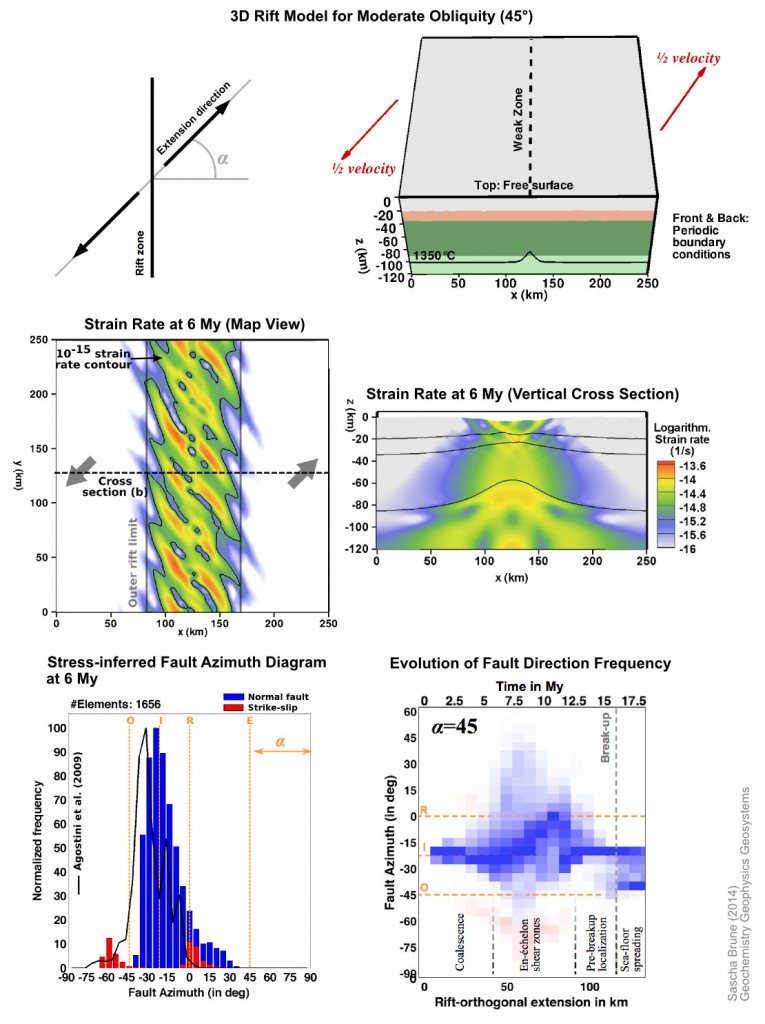Rifting involves complex normal fault systems that are controlled by extension direction, reactivation of pre-rift structures, sedimentation, and dyke dynamics. The relative impact of these factors on the observed fault pattern, however, is difficult to deduce from field-based studies alone.
This study provides insight in crustal stress patterns and fault orientations by employing a laterally homogeneous, 3D rift setup with constant extension velocity. The presented numerical forward experiments cover the whole spectrum of oblique extension. They are conducted using an elasto-visco-plastic finite element model and involve crustal and mantle layers accounting for self-consistent necking of the lithosphere. Despite recent advances, 3D numerical experiments still require relatively coarse resolution so that individual faults are poorly resolved. This issue is addressed by applying a post-processing method that identifies the stress regime and preferred fault azimuth at each surface element.
The simple model setup results in a surprising variety of fault orientations that are solely caused by the three-dimensionality of oblique rift systems. Depending on rift obliquity, these orientations can be grouped in terms of rift-parallel, extension-orthogonal, and intermediate normal fault directions as well as strike-slip faults. While results compare well with analog rift models of low to moderate obliquity, new insight is gained in advanced rift stages and highly oblique settings. Individual fault populations are activated in a characteristic multi-phase evolution driven by lateral density variations of the evolving rift system. In natural rift systems this pattern might be modified by additional heterogeneities, surface processes and dyke dynamics.
Cite as
Brune, S., 2014. Evolution of stress and fault patterns in oblique rift systems: 3-D numerical lithospheric-scale experiments from rift to breakup. Geochemistry Geophysics Geosystems 15:8, 3392–3415. doi:10.1002/2014GC005446.
Downloads
Download the paper – pdf
Download supplement (including animations) – pdf
![]()

